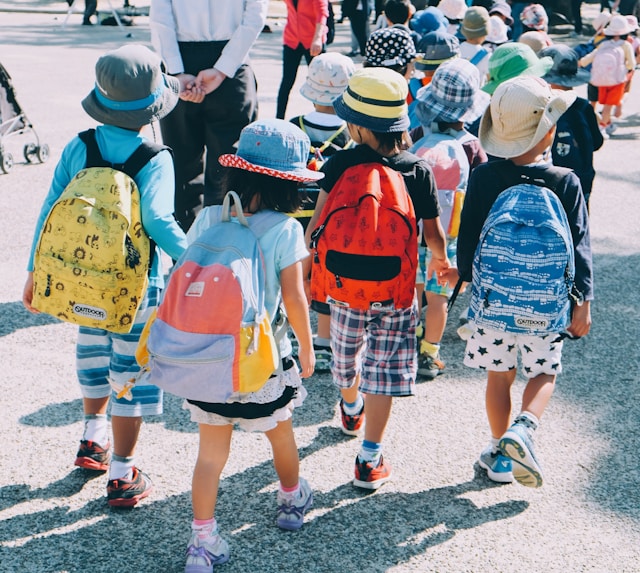Brrrring! Brrrring! We have all become familiar with the shrill clang of the school bell. Even if you dread the noise, as it marks the end of recess, there’s still a little excitement left in the day. There is still so much left to learn! Math, Science, and English: these subjects have become staples in the curriculum of not just school, but also the essentials to life. Addition slowly builds up to the pythagorean theorem. Drawing flowers leads to learning about the life cycle. Spelling tests lead to persuasive essays. We begin to apply what we learn from our back-breaking textbooks into the real world, but what’s missing? History.
Out of all the subjects, history perhaps might be the most critical. The knowledge gained here allows for the application of the popular motto ‘learn from previous mistakes.’ Its roots are the most grounded in the real world as many people alive today still remember them. Yet, there is a lack of interest in the subject. Perhaps, it is not regarded as highly because it is notably not on the SAT or ACT. Or maybe, while other subjects are practically utilized, history ironically remains static, or in the past. Because of this, students lose the emotional impacts of various experiences, especially those that are niche to specific communities. This is why it is so important that Wisconsin decided to require Asian American history to be taught in schools of various grade levels.
In April 2024, Wisconsin passed a bill by Governor Tony Evers that will have K-12 public schools teach Asian American and Hmong history as a part of their required curriculum. Since Illinois set this precedent in 2021, 20 other states have mandated the teaching of AAPI history, according to The Asian American Foundation, with Wisconsin being the 21st. Although the requirement began around three years ago, this has been a long time coming, with some even feeling that it is overdue. Governor Evers felt this change was needed now:“The Hmong and Asian American communities are a critical part of [Wisconsin’s] history, culture, economy, and our future…we celebrate our shared histories and honor the people who help make Wisconsin the state it is today.” The Hmong population was especially noticed, as the University of Wisconsin-Madison notes, they make up 29% of Wisconsin’s Asian population, making them the largest Asian ethnic group in the state. It gives Asian Americans in the Wisconsin community a chance to not only connect with their roots but also “feel safer… and for there to be an understanding amongst students, teachers and administrators about the importance of Asian American stories,” as put by Representative Francesca Hong in an interview with NBC News in February.
While celebration of cultures is an important factor when dealing with Asian representation, Hong raises the critical point of safety. With the 2020 year, came a spike in Asian hate attributed to the coronavirus, and thus prompted the formation of the Make Us Visible campaign. According to their website, Make Us Visible was created “in January 2021 when a small group of parents, students, and teachers came together in search of long-term, bipartisan solutions to anti-Asian American violence.” Their solution? Education. By teaching kids from an early age, US citizens can begin to understand Asian immigrant struggles and the reasons behind previous incidents of harassment and condemnation. These are moments that are so painful to many families even today yet “three in 10 Americans can’t identify a significant Asian American historical event or policy.” That being said, in Wisconsin, the Hmong people that reside there played a critical role in the Vietnam War, leaving their homes, like Laos, behind to serve the United States. Yet, many are not recognized as veterans, as stated by a 2022 PBS article. This lack of knowledge should seem unlikely in the 21st century considering there were about 22.4 million Asian Americans in the United States in 2019. Wisconsin alone has experienced an 82% growth since 2000. According to a CNBC article, this pushback can be attributed to nearly 900 school districts facing local district efforts “to restrict so-called ‘critical race theory.’” Especially for the Hmong people, education creates a safe space in a predominantly white state. Family is a crucial part of Hmong culture, which “explains why Hmong immigration continues to rise in Wisconsin.” As members prefer to be around others of similar ethnicity, the continued education promotion encourages even more movement into the state and an acknowledgment of the strength of the Hmong people.
As a result, many feel an increased concern when it comes to our nation’s education. By restricting history and only history, facts, stories, and emotional turmoils get left behind in a way that would not happen with other subjects. As mentioned earlier, history is supposed to recognize and “learn from previous mistakes.” But if it isn’t even acknowledged in the classroom or in a textbook, how can US citizens apply this knowledge in their interactions of day to day life? Wisconsin passing an Asian American history mandate slowly, but surely expands education. The requirement allows history to not be left behind in the past.
Visual by note thanun

Comments are closed.